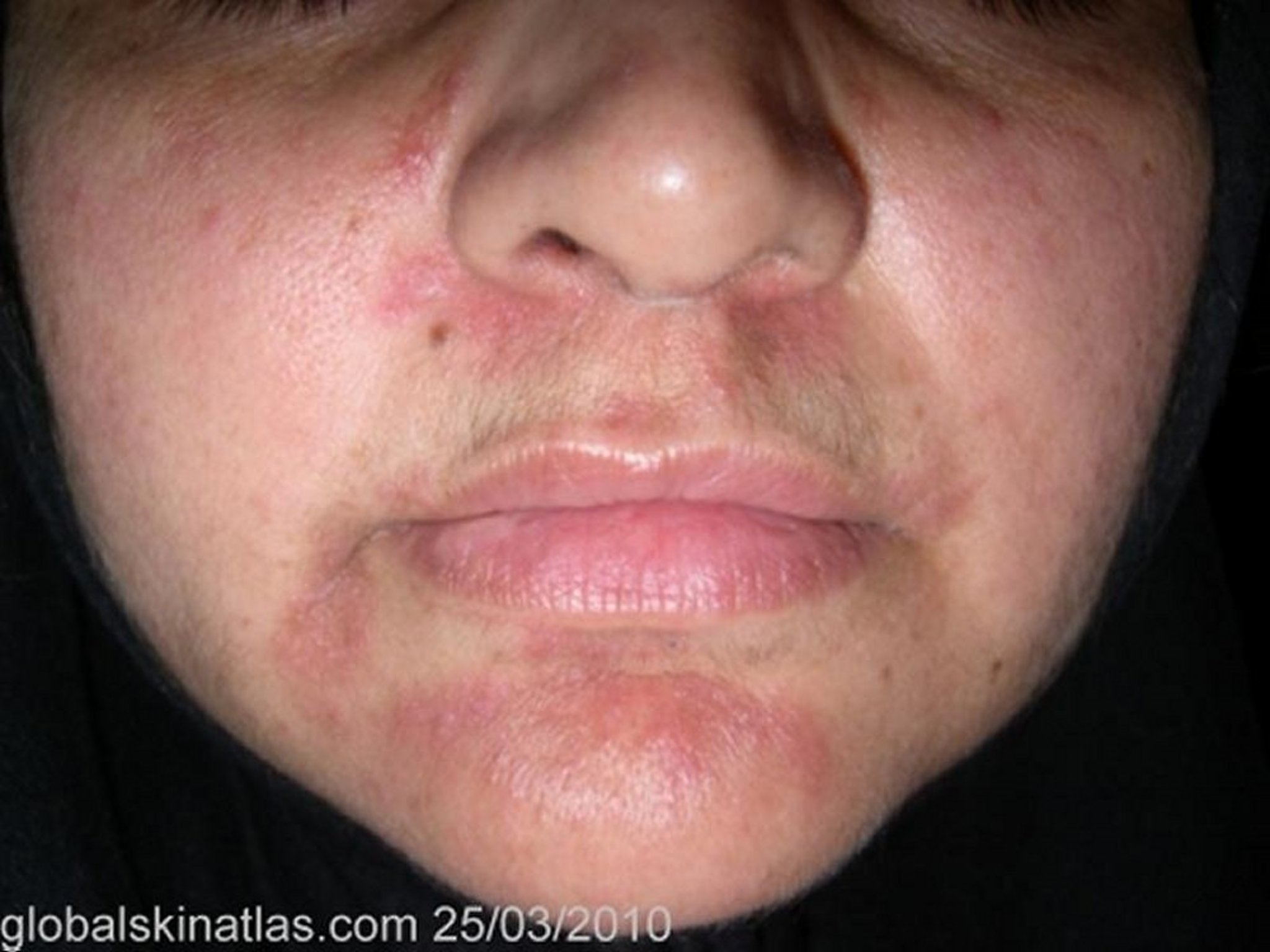Perioral dermatitis is an erythematous, papulopustular facial eruption that resembles acne and/or rosacea but typically starts around the mouth. Diagnosis is by appearance. Treatment includes avoidance of causes, and topical and sometimes oral antibiotics.
Topic Resources
Photo courtesy of Shahbaz Janjua, MD.
Photo courtesy of Karen McKoy, MD.
A variety of causes of perioral dermatitis have been proposed, including exposure to topical corticosteroids and/or fluoride in water and toothpaste, but the etiology of perioral dermatitis is unknown. Despite its name, perioral dermatitis is not a true dermatitis. It primarily affects women of childbearing age and children. The eruption classically starts at the nasolabial folds and spreads periorally, sparing a zone around the vermilion border of the lips. But the eruption can also spread periorbitally and to the forehead.
Diagnosis of Perioral Dermatitis
Clinical evaluation
Diagnosis of perioral dermatitis is by appearance; perioral dermatitis is distinguished from acne by the absence of comedones and from rosacea by the latter’s lack of lesions around the mouth and eyes. Seborrheic dermatitis and contact dermatitis must be excluded.
Biopsy, which is generally not clinically necessary, shows spongiosis and a lymphohistiocytic infiltrate affecting vellus hair follicles. In the lupoid variant, granulomas may be present.
Treatment of Perioral Dermatitis
Avoidance of fluorinated dental products and topical corticosteroids
Topical or sometimes oral antibiotics
Perioral dermatitis treatment is to stop fluorinated dental products and topical corticosteroids (if being used) and then use topical antibiotics (eg, erythromycin 2% or metronidazole 0.75% gel or cream 2 times a day). If there is no response, oral doxycycline or minocycline 50 to 100 mg 2 times a day or oral tetracycline 250 to 500 mg 2 times a day (between meals) may be given for 4 weeks and then tapered to the lowest effective dose. Perioral dermatitis treatment is to stop fluorinated dental products and topical corticosteroids (if being used) and then use topical antibiotics (eg, erythromycin 2% or metronidazole 0.75% gel or cream 2 times a day). If there is no response, oral doxycycline or minocycline 50 to 100 mg 2 times a day or oral tetracycline 250 to 500 mg 2 times a day (between meals) may be given for 4 weeks and then tapered to the lowest effective dose.
In contrast to acne, antibiotics can usually be stopped. Topical pimecrolimus (for people > age 2 years) also reduces disease severity. Isotretinoin has been successfully used to treat granulomatous perioral dermatitis.In contrast to acne, antibiotics can usually be stopped. Topical pimecrolimus (for people > age 2 years) also reduces disease severity. Isotretinoin has been successfully used to treat granulomatous perioral dermatitis.



